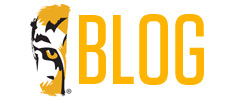The main purpose of homeowners insurance is to protect your house and other structures (for example, a shed or detached garage). It can help cover the cost of repairing the damage or rebuilding the structure should it be destroyed. The exact amount of reimbursement, and how it is calculated, depends on your policy. Insurance may also cover your living expenses, up to a limit, if you have to rent a place to live while you wait for your home to be repaired.
Truth is, if you have a mortgage, your lender probably requires you to buy at least enough homeowners insurance to cover the value of the house itself. But you may choose to purchase more than that, just to make sure you’ve got enough coverage for your possessions, too. And even if you’ve paid off your house, you might want homeowners insurance to protect your investment, as well as your personal property and other assets.
To determine the level of property coverage you should have on your home, you’ll need to find out how much it would cost to rebuild it, since the cost of rebuilding a home is often higher than the price you paid for it.
Your personal property
A typical homeowners policy also covers your personal property, both on and off the premises. Your personal property includes the items inside your home (for example, furniture, appliances, clothing, and jewelry) as well as outdoor items (for example, lawn tools). It’s important to note that some homeowners policies will set a specific dollar limit for certain types of personal property, such as jewelry.
However, the standard level of coverage may not be sufficient to cover the replacement of your property. Ideally, you want enough insurance coverage to replace your possessions if they were destroyed or stolen. If necessary, you can buy additional coverage through riders and/or endorsements.
Covered perils
A typical homeowners policy provides coverage for damage to property caused by fire, smoke, lightning, windstorms, hail, theft, vandalism, and other incidents called perils. But be aware that homeowners insurance typically does not cover every possible way that your home or possessions can be damaged. Flood and earthquake damage are two perils that are not usually covered.
It’s important to know exactly what your policy covers and does not cover. You may need to purchase an endorsement or separate insurance policy if you need coverage for other types of risks.
Reimbursement
Depending on your policy, your insurance company will use one of two methods to determine how much your house or personal property is worth when it reimburses you for a loss:
- Replacement cost: This pays you the cost of replacing damaged property. In other words, it covers the current market cost to replace what was lost, up to a maximum dollar amount.
- Actual cash value: This pays you an amount equal to the replacement value of damaged property, minus depreciation. In other words, it covers what your property was worth at the time of the loss, which might be less than it will cost to buy/build again new.
Keep in mind that before an insurance company reimburses you for a loss, you may need to meet your deductible, which is the amount you pay out-of-pocket toward the cost. Your policy will state how much your deductible is.
Liability coverage
The typical homeowners policy also includes liability protection that provides coverage for damages caused by your negligence. Medical payments to other people and your legal costs for any lawsuits brought against you could be included. Most homeowners policies provide a standard amount of liability coverage. The amount of liability coverage you should have depends on the assets you would like to protect.
Purchasing homeowners insurance
Homeowners insurance policies are written individually, typically at the time you purchase or take out a mortgage on a home. The cost depends on the amount of your coverage, any endorsements you add to the policy, and how high your deductibles are.
It’s important to periodically review your homeowners coverage to make sure that it will cover any major purchases or additions to your home. For convenience, you may want to add an inflation-guard endorsement to your policy, which instructs the insurance company to automatically raise your policy limit at each policy renewal, according to a predetermined index of local home values. Be aware that this will also likely raise your premiums.
Ways to save
Since premiums for similar policies vary from company to company, it pays to shop around and compare rates. Insurance companies sometimes give discounts, too. Ask about a discount if any of these are true for you:
- Your house has protective devices, such as smoke alarms and/or a security system.
- Your home is less than 15 years old.
- All occupants in the home are nonsmokers.
Your insurance company may offer a multiple-policy discount if you have another policy from them, such as your auto insurance. Renewing your homeowners policy with the same company may provide you with a discount, too. Selecting a higher deductible and reducing or omitting coverages can also help you save money. Check your policy to be sure you’re not paying for coverage you don’t need.
Bundling Home and Auto Insurance
One of the easiest and most common ways to save money on insurance is by bundling your home and auto insurance with one company.
Your credit union membership may also qualify you for discounted home insurance through the TruStage™ Insurance Program. Get a homeowners insurance quote now to see how much you could save.




